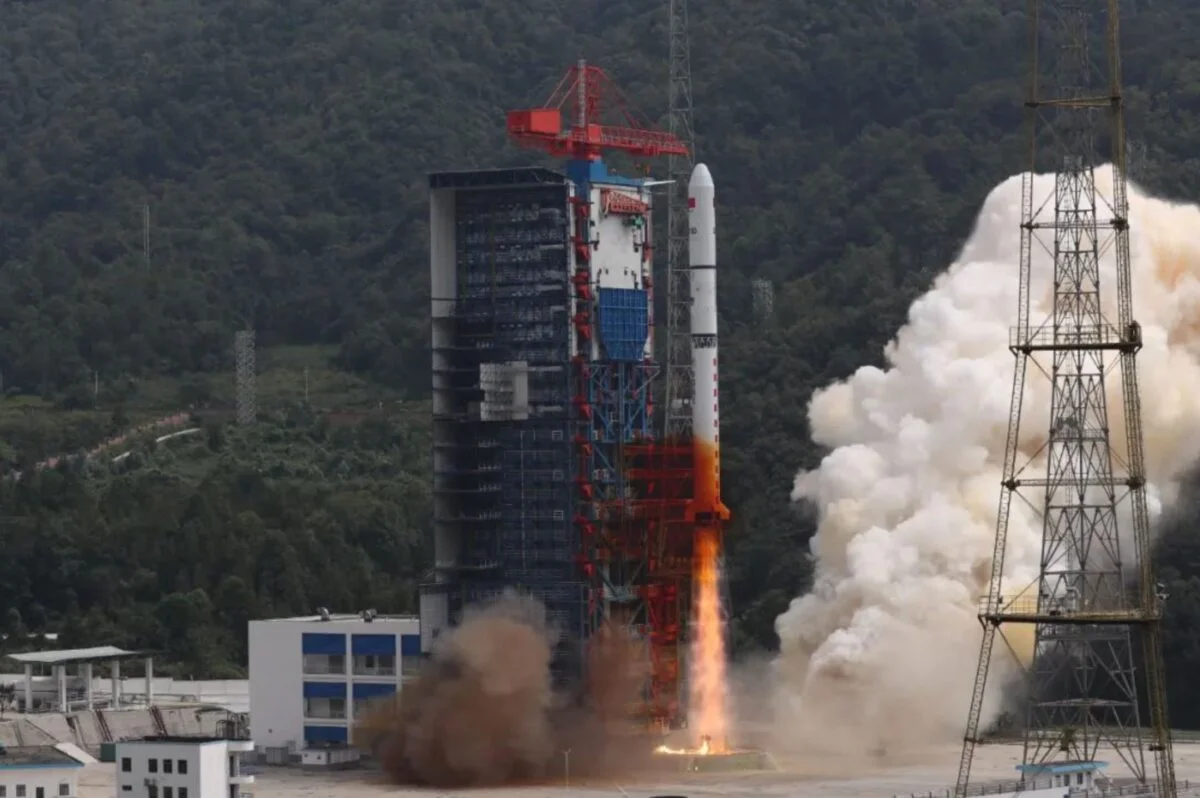China added to its series of reconnaissance satellite launches early Sunday by sending three new Yaogan-39 spacecraft into orbit. The Long March 2D rocket lifted off at 12:13 Eastern Time (04:13 UTC) on September 17 and soared into cloudy skies over the Xichang Satellite Launch Center in southwestern China.
The China Aerospace Science and Technology Corporation (CASC) confirmed the successful launch about half an hour after liftoff and identified the payload as the Yaogan-39 satellite. But like the first launch of the Yaogan-39 series on August 31, the mission also had three satellites.
The four objects have been tracked in approximately circular orbits since launch, at an altitude of 495 kilometers and an inclination angle of 35 degrees. The launch was CASC’s 30th of the year and marked the halfway point of the government space contractor’s plans to launch more than 200 spacecraft in more than 60 launches. The launch marks China’s 43rd orbital mission in 2023, and also underscores the growing role of the country’s thriving commercial sector.
Sunday’s launch also follows the launches of the Yaogan satellites on July 26 (Yaogan-36 Group 05), August 31 (Yaogan-39 (01)), September 6 (Yaogan-33 (03)) and September 10 (Yaogan-40). . 01) ).
China discloses little information about its Yaogan (meaning “remote sensing”) missions. Their clandestine nature and grouping in specific orbits lead Western analysts to believe that the series is at least partially military in nature and provides a range of intelligence capabilities.
Yaogan satellites are believed to carry a variety of optical radars, Synthetic Aperture Radar (SAR) and other sensors. Some satellites are generally described as being designed for the purpose of “detection of the electromagnetic environment and related technical tests”. This could mean that the satellites are designed to gather electronic intelligence.
The Yaogan series fulfills various roles. Some Yaogan satellite groups, such as Yaogan-31, may resemble the trio of U.S. Department of Defense Naval Ocean Surveillance System (NOSS) satellites. Other groups are in 35-degree orbits at 60- or 120-degree intervals, providing near-constant surveillance of troubled areas near China.
The growth in China’s remote sensing capabilities has been noted in the United States. The U.S.-China Economic and Security Review Commission last month requested a declassified report on China’s remote sensing technologies and applications and its overall goals. The purpose of the report is to “identify and evaluate China’s investments in U.S. remote sensing companies; The request stated, “To examine China’s use and development of advanced remote sensors for military purposes.”
China has also launched a number of stealth Ludikancha series satellites. They are considered very high resolution earth observation satellites for military purposes. The country’s commercial sector also builds optical and SAR satellites. Late last year, Changguang Satellite Technology said it planned to more than double the planned size of the Jilin-1 constellation. This development follows China’s interest in the use of commercial satellite imagery in Ukraine. Source













